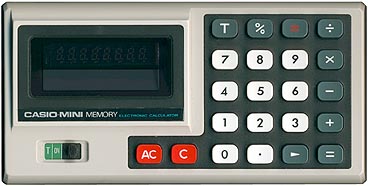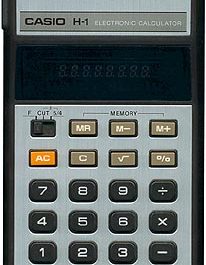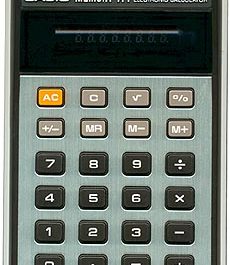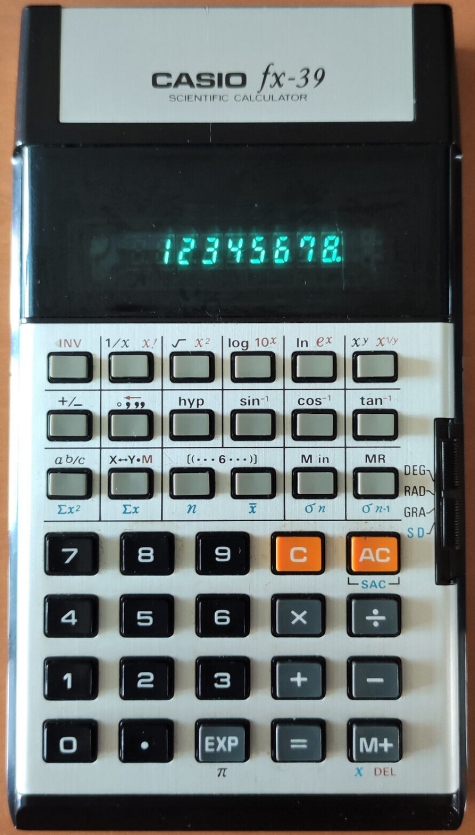
The Casio FX-39 was a scientific calculator released in 1978. With its sleek white and black plastic case, brushed aluminum accents, and bright blue vacuum fluorescent display, it exemplified the clean industrial design Casio calculators were known for.
Measuring 84mm x 152mm x 22.5mm and weighing 146g without batteries, the FX-39 was compact enough to be easily portable. It ran on two AA batteries, providing around 22 hours of continuous use with alkalines. The calculator could also be powered through a socket on the side using Casio’s AD-4145 AC adapter.

The FX-39 featured a large 8 digit display with room for a negative sign indicator. Below this sat a keyboard with subtle black and grey keys, with just two keys highlighted in orange. Despite the subdued styling, the keys had a satisfying squishy feel when pressed.
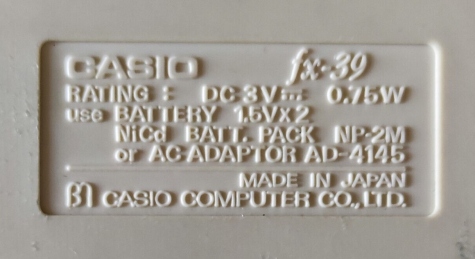
For a late 1970s scientific calculator, the FX-39 packed in many advanced functions. These included:
- Basic arithmetic, squares, square roots
- Factorials, exponents, nth roots
- Logarithms and powers
- Fractions and sexagesimal (degrees, minutes, seconds) conversions
- Trigonometric functions with radian/degree switching
- 6 levels of parentheses
- 4-function statistical memory
- Pi constant
- Register exchange
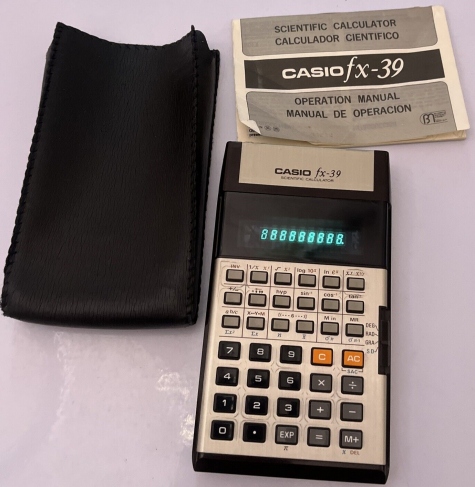
The FX-39 performed internal calculations to a precision of 11 digits, providing a level of accuracy rare for a handheld calculator of that era. The logic and error handling were also quite sophisticated. For example, overflow and divide by zero errors displayed a specific “E” error code rather than locking up the calculator.
One minor weak point was the 8 digit display, which meant some loss of precision when displaying long numbers or intermediate results. But overall the FX-39 provided exceptional functionality and quality given its time. It represented an important milestone in Casio’s decades-long history of producing innovative calculators.
